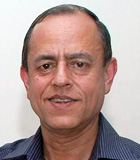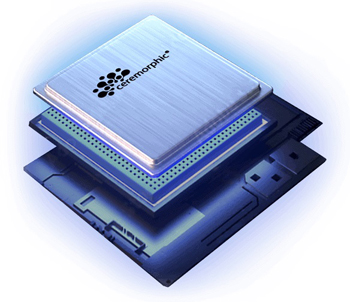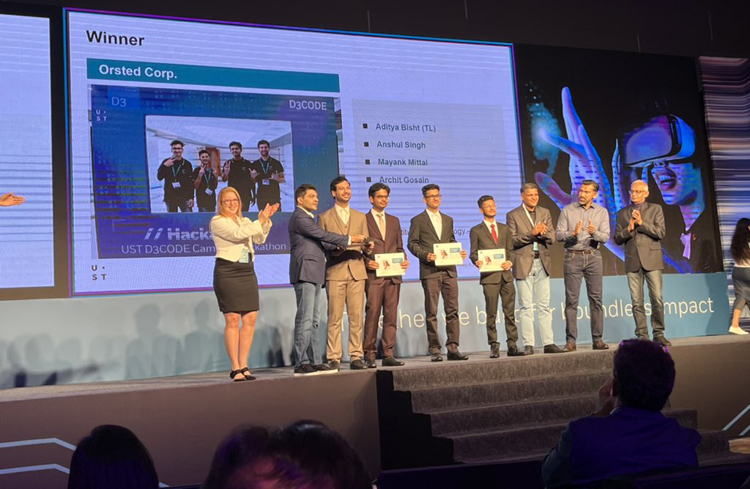INDIAN ARMED FORCES CHIEFS ON OUR RELENTLESS AND FOCUSED PUBLISHING EFFORTS

The insightful articles, inspiring narrations and analytical perspectives presented by the Editorial Team, establish an alluring connect with the reader. My compliments and best wishes to SP Guide Publications.

"Over the past 60 years, the growth of SP Guide Publications has mirrored the rising stature of Indian Navy. Its well-researched and informative magazines on Defence and Aerospace sector have served to shape an educated opinion of our military personnel, policy makers and the public alike. I wish SP's Publication team continued success, fair winds and following seas in all future endeavour!"

Since, its inception in 1964, SP Guide Publications has consistently demonstrated commitment to high-quality journalism in the aerospace and defence sectors, earning a well-deserved reputation as Asia's largest media house in this domain. I wish SP Guide Publications continued success in its pursuit of excellence.
- MoD initiates comprehensive review of Defence Acquisition Procedure 2020, pushes for defence reforms
- G7: The Swansong
- Kalinga Connect: South Asia to Polynesia
- Must Credit DRDO for Operation Sindoor, now what is next for defence R&D?
- The layered Air Defence systems that worked superbly, the key element of Operation Sindoor
- Operation Sindoor | Day 2 DGMOs Briefing
- Operation Sindoor: Resolute yet Restrained
Private Industry Innovations
Prime Minister Narendra Modi saying “It is our collective aim to establish India as one of the key partners in global semiconductor supply chains” has increased India’s focus on producing semiconductors
 |
The Author is Former Director General of Information Systems and A Special Forces Veteran, Indian Army |

Semiconductor chips are the backbone of electronic technology, the most important aspect being the integrated circuit (IC), which isusedin desktops, laptops, scanners, cell phones, games consoles and other electronic devices. Many digital consumer products in everyday life like digital cameras, televisions, washing machines, refrigerators, microwaves and LED bulbs also use semiconductors.
In military applications, semiconductor chips form an essential component of hypersonic weapons, space sensors, and even stealth aircraft – all of which are indispensable requirements. As of 2021, US-based foundries were producing only about 2 per cent of the devices used in military systems, generally chips used in secret programmes or for application-specific uses such as radiation-hardened devices for use in space or nuclear conflict. American dependency on Taiwanese production of chips for defence systems extends beyond artificial intelligence (AI). The Taiwan Semiconductor Manufacturing Company (TSMC) supplies semiconductors used in F-35 fighters and a wide range of military-grade devices used by the US Department of Defence (DOD).
In military applications, semiconductor chips form an essential component of hypersonic weapons, space sensors, and even stealth aircraft – all of which are indispensable requirements
Semiconductors for ICs are mass-produced. To create an ideal semiconducting material, chemical purity is paramount. Any small imperfection can have a drastic effect on how the semiconducting material behaves due to the scale at which the materials are used. Founded in 1984, 'SPEL Semiconductors' is India's first Semiconductor IC assembly and test facility provider. As of January 2023, the market capitalisation of the company is 232 crore, the stock's one-year return is 25.57 per cent and the five-year CAGR is 179.01 per cent. Semiconductors are essential to almost all sectors of India's economy including aerospace, automobiles, communications, clean energy, information technology, medical devices and the like.
It is estimated that India's domestic consumption of semiconductors will cross $80 billion by 2026 and $110 billion by 2030. This requires a domestic ecosystem that can sustain supply without the need to depend on volatile global supply chains. Prime Minister Narendra Modi saying "It is our collective aim to establish India as one of the key partners in global semiconductor supply chains" has increased India's focus on producing semiconductors.

Now there is news that a Hyderabad and US-based company 'Ceramorphic' has taped-out a 5-nanometric (nm) AI supercomputing chip, which according to Venkat Matella, Founder and CEO of the firm, is the very first chip designed by the company – by a young 150-member team including over 100 IIT B-Tech graduates in barely two years.
In semiconductor language, 'tape-out' is the final result of the design process for ICs before they are sent for manufacturing. Ceramorphics' 5nm chip was successfully taped-out on October 5, 2022 and sent to Taiwan's TSMC for testing, recalibration, validation and return in early 2023. The final tape-out is expected in late 2023 and the chip is scheduled to go into production in 2024.
It is estimated that India's domestic consumption of semiconductors will cross $80 billion by 2026 and $110 billion by 2030. This requires a domestic ecosystem that can sustain supply without the need to depend on volatile global supply chains.
5nm is the chip processing technology that is in bulk production presently, allows companies to pack more transistors into a given area of silicon compared to the earlier 7nm technology. More transistors enable more calculations by the processor – increasing its power. More densely packed transistors also lead to lower power consumption. Taiwan, Japan, South Korea and China are already working on 3nm chips while IBM has begun talking of a 2nm chip. Given the right focus, India should be able to develop more advanced semiconductors in an early timeframe.
Concurrently, Bengaluru-based company 'Data Patterns (India) in collaboration with Swedish company SAAB has jointly developed an airborne electronic warfare (EW) demo system, which the company displayed at Aero India 2023 Air-show and Exhibition scheduled held at Bengaluru from February 13 to 17. Data Patterns (India) has not released details of the EW system but the company is also working on providing stealth capabilities to aircraft, even against low frequency radars. The company claims to have also developed techniques to increase the bandwidth of power levels so that low frequencies (200-300 MHz) can detect fighter jets using stealth.

The EW system developed by Data Patterns looks sleek in photographs. If successful in trials, this could be fitted on our Rafale, Jaguar, Tejas and Mirage 2000 fighter jets, as the MiG-21, MiG-29 and Su-30s are already fitted with Israeli EW pods. Earlier, a seeker for the BrahMos missile developed by Data Patterns was found to be more compact and more effective in an EW rich environment compared to the seeker developed by the government-owned Electronic Corporation of India Limited (ECIL).
The EW system developed by Data Patterns, if successful in trials, could be fitted on our Rafale, Jaguar, Tejas and Mirage 2000 fighter jets
On December 14, 2022, a team from IIT-Roorkee won the second edition of 'D3code' hackathon organised by the digital transformation solutions company UST in Thiruvananthapuram. The hackathon witnessed 840 participants from 146 team's pan-India, who were tasked with diving into the metaverse to explore technologies that help decentralise, localise, curate, and contextualise online experiences; to learn how organisations can strategically create meaningful experiences for customers and consumers.
All the above are excellent developments indicating India has the brains to reach the zenith. The challenges, however, remain the same; lengthy processes of introducing the equipment and mass production, subjugation of private industry by the DRDO and the inevitable red tape. It is time we tackle these menaces.





